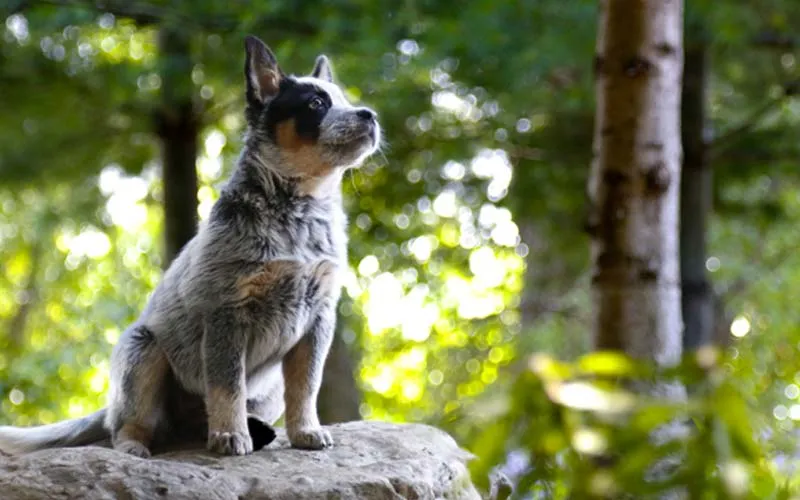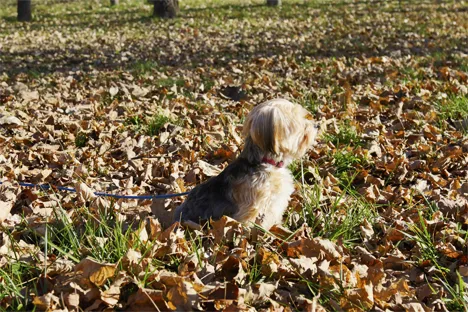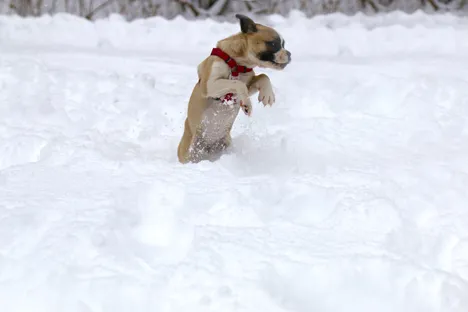House training a new dog or puppy is a common challenge that many owners face, but it doesn’t have to be a frustrating ordeal. With the right approach, consistency, and a deep understanding of canine instincts, you can successfully teach your dog where and when to relieve themselves. This guide will outline the Best Way To House Train A Dog, focusing on effective techniques that leverage natural canine behaviors to ensure a clean and happy home environment. By establishing clear communication and consistent routines, you’ll find that house training is a straightforward process, applicable to both young puppies and older rescue dogs. Moreover, building this foundational training can open doors to teaching your puppy to come on command and other vital commands, strengthening your bond and overall obedience.
Understanding the Fundamentals of Dog House Training
When it comes to house training, there’s no such thing as an “almost” housebroken dog; they either are or they aren’t. Many owners mistakenly believe that simply letting their dog out in the backyard a few times a day will suffice, but dogs need clear communication and consistent guidance to understand what’s expected of them. The core principle of house training is simple: prevent indoor accidents and provide ample opportunities for your dog to relieve themselves outdoors. This process also involves teaching your dog how to communicate their needs to you and associating specific commands with outdoor potty breaks.
Dogs are creatures of habit and learn by association. If their training is consistent, they will quickly learn that the only acceptable place to relieve themselves is outside. This method takes advantage of a dog’s very natural instinct to keep their sleeping quarters clean, a fundamental behavior observed in their wild ancestors.
The Power of Crate Training: Leveraging Natural Instincts
The most effective method for house training dogs is crate training, which harnesses a dog’s inherent den-dwelling instincts. A dog crate provides a safe, natural “den” that your dog will instinctively want to keep clean. When the crate is appropriately sized, dogs are reluctant to soil their sleeping area. While some puppies may initially protest loudly when introduced to a crate, most will accept it within a few days, understanding it as their personal sanctuary.
Choosing the Right Crate Size
When selecting a crate, think “den, not condo!” The crate should be just large enough for your dog to comfortably stand up, turn around, and lie down. A crate that is too large for a puppy can inadvertently encourage them to use one portion as a bed and another as a “relief station,” defeating the purpose of crate training. The goal is to create a snug, secure space that appeals to their natural desire for a protected den.
 A happy brown dog resting comfortably inside a wire crate, demonstrating a positive crate experience.
A happy brown dog resting comfortably inside a wire crate, demonstrating a positive crate experience.
Making the Crate a Positive Place
To foster a positive association with the crate, always make it a rewarding experience. Use a specific command like “CRATE” and toss a few all-natural dog treats inside whenever you instruct your dog to enter. This quickly teaches them to expect a treat and makes going into the crate a positive event. As your dog matures, they will learn to enter the crate on command without immediate treats, a skill useful for managing behavior when guests arrive or to prevent barking at the doorbell. This foundational crate training also helps with teaching your dog not to jump on people.
Crate training should begin while you are in the same room, offering frequent praise for quiet behavior. Gradually extend your absences, and soon your dog will be comfortable remaining in the crate for several hours. It’s also beneficial to feed your dog their meals inside the crate, further solidifying its role as a positive, private domain.
Important Crate Rules and Considerations
A crate should never be used as a place of punishment. Instead, it should be associated with safety and comfort. Providing a couple of safe toys, such as a Kong filled with peanut butter or cream cheese, can keep a puppy occupied and quiet during crate time. However, be cautious with toy selection; soft, squeaky toys can be dangerous if chewed and ingested.
For bedding, a simple rubber cow mat is often recommended over soft bedding, as it’s easy to clean and doesn’t encourage soiling. Plastic airline crates are generally preferred for house training because they are easy to clean and contain hair better than wire crates.
Establishing a Consistent Potty Schedule
Consistency is paramount in successful house training. Your dog should only be allowed to relieve themselves outdoors. A strict schedule, especially during the early stages, is crucial. Dogs typically need to go to the bathroom after sleeping, eating, and having exercise.
- Morning Routine: The very first thing in the morning, immediately take your dog outside. They’ve been holding it all night and will need to relieve themselves quickly. Lavishly praise them with a phrase like “GOOD OUTSIDE” as soon as they complete their business. Bring them back inside promptly.
- Mealtime Routine: After every meal, take your dog outside. This is a critical time for elimination.
- Frequent Trips: Take your dog out as often as possible—every hour if you are home. This establishes a strong pattern and gives them ample opportunity to succeed outdoors. Always ask “DO YOU WANT TO GO OUTSIDE?” before heading out, and continue praising them with “GOOD OUTSIDE” for successful eliminations.
Supervising Your Dog for Success
Unless you have your eyes directly on your dog, they should not have free access to the house. If you turn your back for even a minute and an accident occurs, it’s your mistake, not the dog’s. Utilize tools like child gates to confine your dog to a supervised area, such as the kitchen, after they have just come in from going outside. Full, unsupervised freedom in the house should only be granted to dogs that are 18 to 24 months old and completely house-trained. This vigilance also helps in teaching your dog not to pull on its leash when outside.
 A small, dark puppy on a blue leash, demonstrating a supervised outdoor potty break.
A small, dark puppy on a blue leash, demonstrating a supervised outdoor potty break.
The Role of Diet in Potty Training
A dog’s diet can significantly impact their elimination schedule. Commercial kibble diets can take 14 to 15 hours to pass through a dog, while an all-natural diet typically processes in 5 to 6 hours. Maintaining a consistent diet is also important; avoid frequent changes, as this can upset their digestive system and make house training more unpredictable.
Handling Accidents and Corrections Appropriately
Accidents will happen, especially in the early stages of house training. How you handle them is critical for success.
- Odor Neutralizers: If an accident occurs indoors, it’s vital to eliminate the odor completely. Use an enzymatic odor neutralizer, available at pet stores, to neutralize the scent. Avoid household cleaners that contain ammonia, as these can attract your dog back to the same spot. After neutralizing, you can spray the area with an indoor pet spray repellent.
- Catching in the Act: Never punish your puppy for an accident unless you catch them in the act. Dogs lack the mental capacity to connect punishment with an event that occurred even a few minutes prior. If you catch your puppy in the act (within 2 seconds), clap your hands or pick them up to interrupt, then immediately take them outside to finish. Lavishly praise them when they go to the bathroom outdoors. This teaches them the correct place without instilling fear.
- Dispelling Myths: Dogs do not mess in the house out of spite or revenge. Accidents are typically due to anxiety, nervousness, fear, or simply a lack of proper house training. A dog cringing when you come home after an accident is associating your arrival with past punishments, not guilt over the mess itself.
Why Paper Training (Potty Pads) is Counterproductive
The use of “paper breaking” or potty pads is strongly discouraged. By allowing your dog to relieve themselves indoors on paper, you are effectively teaching them that it is acceptable to go to the bathroom inside the house. This creates confusion when you later expect them to only go outside. Healthy puppies, eight weeks or older, are capable of going outside, even in cold weather, for short periods to do their business. Relying on potty pads often creates more problems than it solves.
Addressing Specific Challenges
Even with the best methods, some challenges may arise.
- Very Young Pups: Puppies under 12 to 14 weeks may need to go out every couple of hours, including during the night. Ensure you pick up water at 6:30 PM and provide enough exercise to tire them before bed. If a pup cries in the crate at night and you suspect it’s for play rather than a potty break, ignore it. If an accident occurs in the crate, you made a mistake by not taking them out; continue with the routine.
- “Pig” Pups: Occasionally, a pup may soil their crate despite frequent outings. This can sometimes stem from unhygienic living conditions before adoption, where they learned to “be a pig.” While frustrating, persistence with consistent crate training and cleaning will eventually lead to success.
 A small, white puppy playing happily in a grassy backyard, showing the ideal outdoor environment for potty training.
A small, white puppy playing happily in a grassy backyard, showing the ideal outdoor environment for potty training.
Beyond Potty Training: Crate for Safety and Behavior
The benefits of crate training extend beyond house training. Crates are invaluable for preventing destructive behaviors such as chewing on walls, shoes, or furniture, especially when you cannot supervise your dog. It is highly recommended to keep your dogs in crates until they are 18 to 24 months old to ensure good habits are fully ingrained and to prevent costly damage. This comprehensive approach to puppy care is often detailed in resources like “Your Puppy 8 Weeks to 8 Months,” which guides owners through crucial developmental stages.
Successful house training is achievable with consistency, patience, and the effective use of crate training. By understanding your dog’s natural instincts, establishing clear routines, making the crate a positive space, and handling accidents appropriately, you can ensure a clean home and a well-behaved companion. Remember that this foundational training also helps reinforce other commands and good behavior, such as preventing your dog from jumping on the sofa or learning [100 tricks to teach your dog]. Embrace these strategies, and you’ll soon enjoy the rewards of a fully house-trained dog.
